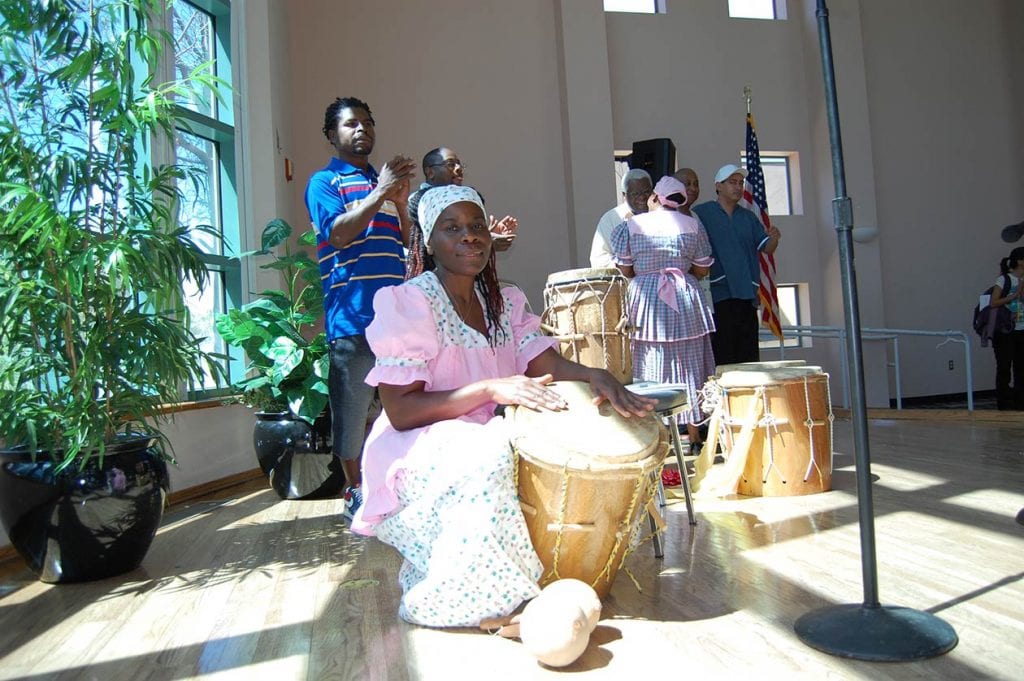Garifuna Dance: Flavor, Culture and History
I spent a morning doing Garifuna dancing, and this is what I learned

Por Franklin Villavicencio (Confidencial)
HAVANA TIMES – I had never before danced any of the Caribbean dances with the discipline and awareness they deserve. Maybe I’ve improvised a crazy, spontaneous version of the Palo de Mayo (Caribbean Maypole Dance) at some party, but never with the spiritual connotation which this culture imbues in its dances.
My colleagues at the Niu web-zine challenged me to attend a three-hour workshop in Garifuna Dance. I accepted, and off I went to dance with my “ancestors” and to get to know a different world that exists within our geographic limits, but which I was unaware of.
When I arrived at the Spanish Cultural Center in Nicaragua, the place where the workshop would be held, I ran into some 25 people who were willing, like me, to participate in the workshop. That was my first surprise.
Dancing isn’t my strong suit, since my body and the music have never figured out how to work together. I ducked out every time they were organizing dance groups in my school; at parties, it was only after many hours had passed – and one or another euphoric impulses – that my feet could be dragged out onto the dance floor.
On seeing a good number of people there with me, I breathed deeply and said to myself: “Ok, here we go.” The class began under the direction of Leonel Perez, an excellent dancer and promotor of Caribbean culture. The teacher explained to us that we were going to dance with our ancestors. I connected with the dance right away and stopped seeing it as merely a corporal exercise, understanding that it was a spiritual manifestation as well.
Leonel Perez explained the history of the Garifuna people, their origins and later their exodus. My body began to relax more as the tension caused by my fears of making myself ridiculous began to evaporate.
The Garifunas are rightly proud of their history. They were never enslaved. Their ancestors were a mix of African slaves with Arahuaco indigenous people from the Caribbean island of St. Vincent. The Italian scholar Francesca Gargallo has taken on the job of narrating the historical background of this people in her book, “Garifuna, Garinuga, Caribe (2002).” She tells how a boat full of slaves coming from Africa was shipwrecked near St. Vincent’s in the Caribbean. The slaves managed to escape, and the island’s inhabitants gave them shelter and asylum.

Gargallo also gives another version that claims that the shipwreck was caused by the resistance and desire for freedom of the slaves inside the ship. From their inception, the Garifuna people seem to carry in their genes an unconquerable spirit.
According to Gallargo’s research, the memory persists among the Garifunas of their life on that island where they were free and had everything they needed. Many of them refer to themselves as “the people of the diaspora,” since they managed to maintain their traditions even after being torn out of their land.
These historical attributes are mixed with the cultural manifestations of all of the peoples who are descended from the Africans. In the case of the Garifuna, the dance includes 30 different versions, each one unique with respect to costume, tradition and movements.

The dance we learned in this workshop was “La Punta” [roughly: “the tip”], which is usually danced as a manifestation of grief when an adult dies. The dance consists of moving the body and slowly edging forward on tiptoes.
The first thing we did following a brief historical summary of the origin of this people, was to do warm-ups. Later we formed four rows of five people each and we practiced the first step.
My body was thankful to move a little, and made me regret the sedentary life I lead. The majority of those in the hall mastered the steps and possessed a flexibility that was lacking in me.
Two hours later, after sweating a lot and suffering pains in the feet and ankles, the moment arrived to change and put on the traditional clothes to dance “Punta” and to put together a small choreography. My second surprise came when they told us that the men should dance shirtless. That’s something I didn’t expect. At that moment I thought, “Goodbye challenge!”

We got in a line and put into practice everything we’d learned in the morning. I merely followed the people who were in front of me; I believe we were all doing that. The rhythm of the drums and their beats adjusted themselves to our steps, so we were keeping to the music.
The lines splintered when a stick fell in the center: that was the signal to form a circle. I confess that I felt transported and experienced the spirituality of that dance which was almost like a ritual. I felt happy and that I was indeed dancing with my ancestors and discovering my own roots. The challenge ended up as three hours of freedom, peace and union with my body.
The groups of African descendants were responsible for a cultural explosion that continues to create ripple effects across the world, despite having occurred centuries ago. We’re in their debt for jazz, blues, gospel, samba, pati, [sweet Afro-Caribbean meat cakes], rondon [fish stew] and much more. Now that I know the history of the Garifuna people, I feel I’ve grown a lot culturally, and I’m eager to investigate, dance and find out more every day about these traditions.





